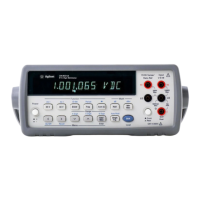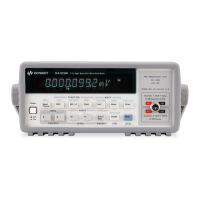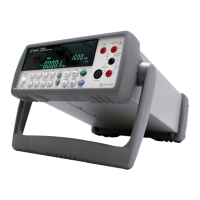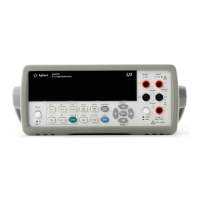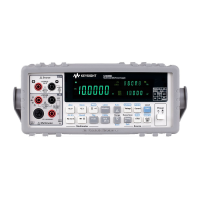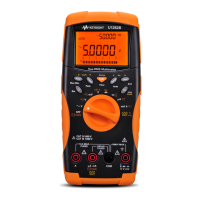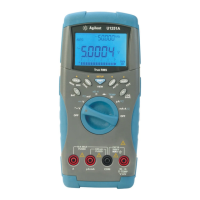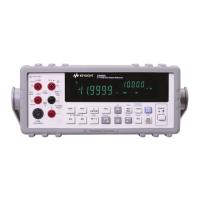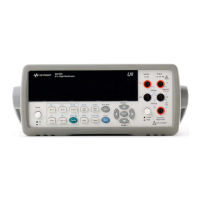Chapter 6 Command Reference 245
STB?
found the desired state, press the Enter key to recall that state.
• Related Commands: MSIZE, PURGE, RSTATE, SCRATCH
Example OUTPUT 722;"SSTATE B2 " !STORES PRESENT STATE WITH NAME B2
STB?
Status Byte Query. The status register contains seven bits that monitor various
multimeter conditions. When a condition occurs, the corresponding bit is set in
the status register. The STB? (status byte?) command returns a number
representing the set bits. The returned number is the weighted sum of all set bits.
Syntax STB?
Status Register
Conditions
The status register conditions and their weights are:
Remarks • When you execute the STB? Command, the ready bit (bit 4) is always clear (not
ready) because the multimeter is processing the STB? command.
• The CSB command clears the status register (bits 4, 5, and 6 are not cleared if
the condition(s) that set the bit(s) still exist). The RQS command designates
which status register conditions will assert SRQ on the GPIB bus.
• Related Commands: CSB, EXTOUT, RQS, SPOLL (GPIB command)
Example 10 OUTPUT 722;"STB?" !RETURNS THE WEIGHTED SUM OF ALL SET BITS
20 ENTER 722 !ENTERS RESPONSE INTO COMPUTER'S A VARIABLE
30 PRINT A !PRINTS RESPONSE
40 END
Assume the above program returns the weighted sum 24. This means the bits with
weighted values 8 (power-on) and 16 (ready for instructions) are set.
Decimal
Weight
Bit
Number Status Register Condition
1 0 Subprogram Execution Completed
2 1 Hi or Lo Limit Exceeded
4 2 SRQ Command Executed
8 3 Power On
16 4 Ready for Instructions
32 5 Error (Consult Error Register)
64 6 Service Requested (you cannot disable this bit)
128 7 Data Available
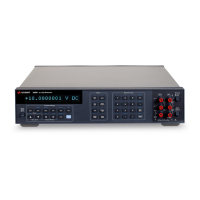
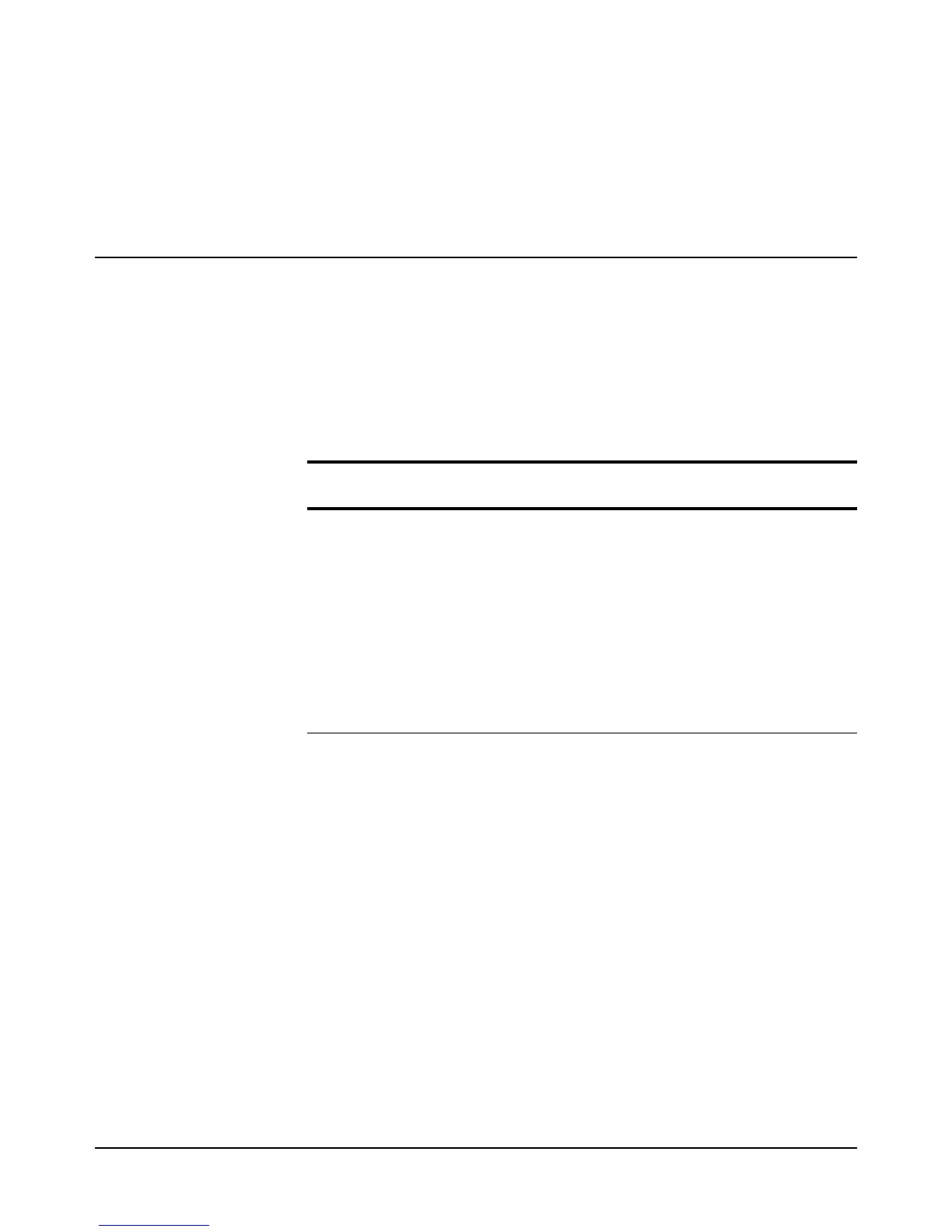